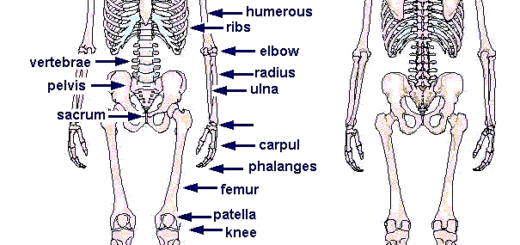Direct current voltmeter, Ohmmeter uses, importance and structure
Analog measuring instruments depend on the torque that is generated in a moving coil carrying current in a magnetic field, They depend on a pointer to give the value of the quantity, such as moving coil galvanometer, ammeter and voltmeter, Digital measuring instruments depend on digital electronics, They depend on digital numbers appears on the screen to measure the value, such as AC & DC current measuring instruments.
Direct current voltmeter
The voltmeter is an instrument used to measure the potential difference between two points and it is a sensitive galvanometer connected in series to a very high resistance called multiplier resistance (Rm), It is used to measure the potential difference between two points in an electric circuit.
The positive terminal of the voltmeter is connected to the positive potential and the negative terminal to the negative potential where the voltmeter is connected in parallel in the circuit, to make the potential difference between the ends of the voltmeter equal to that required to be measured, The Galvanometer coil is connected in series with a very high resistance called a multiplier resistor (Rm).
Voltmeter increases the measuring range of the device to measure higher voltage, It increases the whole resistance of the voltmeter, thus when it is connected in parallel in an electric circuit draws a negligible current and does not affect the voltage drop to be measured.
The idea of working depends on the torque that is affecting a moving coil carrying an electric current in a magnetic field, Multiplier resistance is a large resistance that is connected in series with a galvanometer to convert it into a voltmeter to measure a larger potential difference.
If the multiplier resistor of voltmeter = 1000 Ω, It means that the resistance value that is connected in series with galvanometer to increase the measured potential difference of voltmeter = 1000 Ω.
Deduction of the multiplier resistance
Rg, Rm are connected in series.
V = Vg + Vm = Ig Rg + Ig Rm
Rm = ( V − Ig Rg ) / Ig
Ohmmeter
Ohmmeter is an instrument used to measure the resistance of an unknown resistor directly as it is a sensitive galvanometer connected in series to an electric cell, standard resistance & rheostat, Ohmmeter is used to measure the resistance of unknown resistor, Terminals of the ohmmeter are connected to the ends of the resistor to be measured (Rx).
Device description:
- Micro ammeter (Galvanometer) reads 400 μ A as a maximum and its resistance (Rg = 250 Ω).
- Constant resistance (Rc = 3000 Ω) connected in series with the micro ammeter.
- Variable resistance, its range (Rv = 6565 Ω) connected in series with the micro ammeter to control the electric current intensity passing through the instrument.
- Dry cell of negligible internal resistance and emf (VB = 1.5 V) which is constant to keep the electric current intensity constant during adjusting the pointer of the galvanometer or during using it thus the electric current intensity is inversely proportional to the total resistance based on Ohm’s law.
Idea of operation
Measuring a resistance depends on the inverse relation between the resistance value and the electric current intensity at constant potential difference according to Ohm’s law (I = V / R).
If the potential difference is constant and known, the electric current intensity passing in the circuit decreases by increasing the resistance value (Rx) and the galvanometer can be calibrated to measure the resistance directly.
Calibration method:
By adjusting the value of rheostat until we get the full-scale deflection of the galvanometer (so, this is the maximum current passing through the galvanometer).
Ig = 400 μA
Then the resistance of the circuit (R‾) becomes:
R‾ = VB / Ig
R‾ = 1.5 / ( 400 × 10−6 ) = 3750 Ω
This means that the variable resistance (Rv = 500 Ω) which makes the resistance of the circuit equals 3750 Ω, where:
R‾ = Rc + Rg+ Rv = 3000 + 250 + 500 = 3750 Ω
So, the pointer deflects to the maximum and the maximum electric current passes in the coil is:
Ig= VB / ( Rc + Rg+ Rv ) = VB / R‾
We can calibrate the instrument by knowing the resistance value (Rx), So, Connecting the resistance Rx = 3750 Ω (equals to the resistance of the circuit) between the terminals of the instrument, the current decreases and the pointer deflects to its half, we can calculate the electric current intensity from the following relation:
I = VB / ( Rx + Rc + Rg+ Rv ) = VB / ( Rx + R‾ )
Connecting resistance Rx = 7500 Ω (double the circuit resistance) between the terminals, so, the pointer deflects to 1/3 its scale.
Connecting resistance Rx = 11250 Ω (three times of the circuit resistance) between the terminals, so, the pointer deflects to ¼ its scale.
The used scale to measure the resistance (ohmmeter scale) is opposite to the current scale (ammeter scale), Because the electric current intensity is inversely proportional to the electrical resistance (I ∝ 1/R), so, at maximum deflection, the resistance vanishes.
The divisions of ohmmeter scales are not equal, as the electric current intensity is inversely proportional to the total resistance of the circuit and not to the unknown resistance only.
Sensitive moving coil galvanometer, Direct current ammeter and Ammeter sensitivity
Electromagnetic induction, Faraday’s law and self-induction coefficient in a coil



